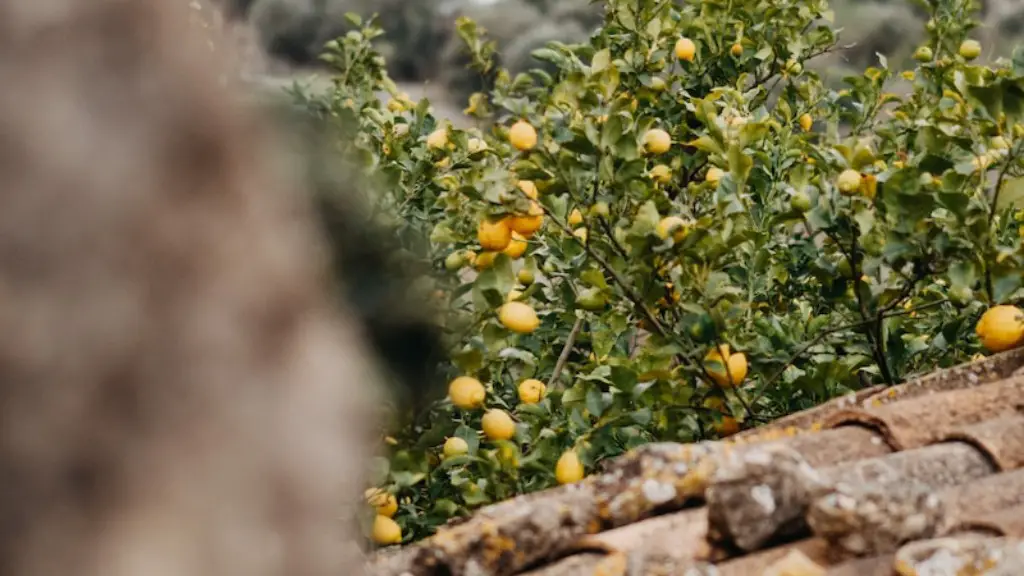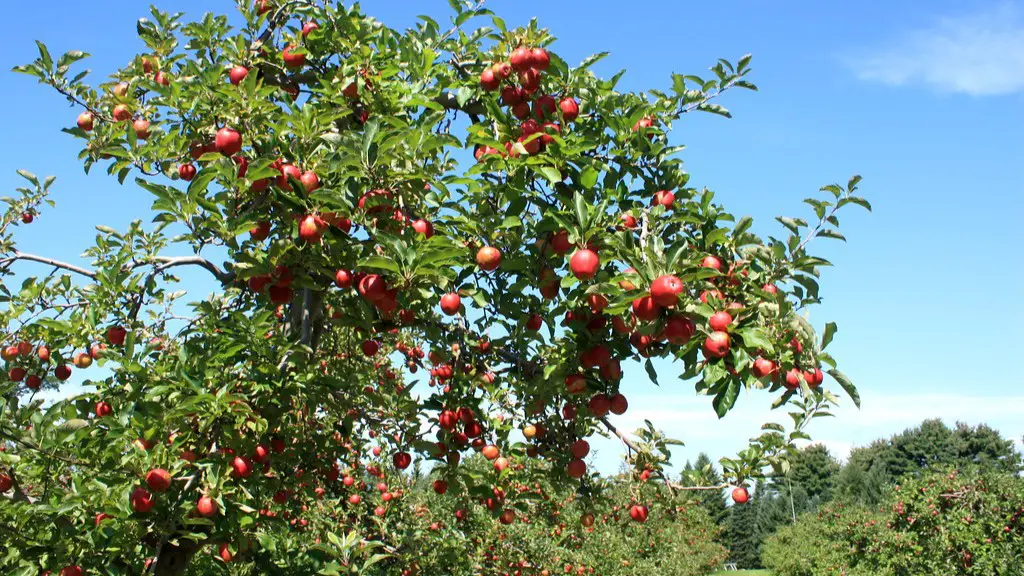When it comes to planting a lemon tree, timing is key. Spring is typically the best season to start the process. During the mild weather, the soil is in its best condition for the tree, and temperatures will be favorable for growth and bud formation. The key to successful planting is to get the tree in its new home well before summer arrives. First, prepare the area for the lemon tree before you begin. Loosen up the soil to a depth of 12 inches and fill it in with well-drained, nutrient-rich soil amendments. Be sure to create a planting hole that’s twice as wide as the root ball and the same depth. Place the tree in the ground, patting a little soil around the sides to secure it. Make sure the root collar is visible and above grade.
Be careful to avoid planting a lemon tree in an area that gets too much sun as this can lead to dehydration. Shade cast by nearby structures or trees can significantly reduce the sun’s intensity. The ideal spot should get ample sunlight during the day while providing partial shade in the afternoon. Plants in pots should be monitored more closely as they are more susceptible to extreme temperatures. Potted lemon trees should be watered more frequently, especially in the hot summer months. The watering should be frequent and adequate to help it stay healthy and produce as much fruit as possible.
Once the lemon tree is in the ground and happily planted, mulch should be added to help slow down moisture loss and regulate soil temperatures. Organic mulch is preferable, and adding a few inches around the tree will help to keep it from drying out too quickly. Citrus trees typically require additional nutrients throughout the growing season, so be sure to consult with a local gardening expert about the best fertilizer for you and your area. In addition to feeding the tree, be sure to irrigate it as needed. Water should be administered at the base of the plant and not on its leaves as wet foliage can encourage disease.
It may take up to two years for a lemon tree to begin producing fruit. To ensure a good harvest, pruning may be needed to keep it at a manageable size. Pruning should be done carefully, particularly since lemon trees can be sensitive to harsh pruning. Any major pruning should be done within two weeks of planting to reduce the size of the foliage safely. Typically, pruning should only be done to remove dead branches and to shape the tree as needed. In addition to pruning, you may find that thining the fruit may be necessary as your tree begins to bear fruit as too much produce can be difficult for the branches to hold.
When planting a lemon tree, being mindful of the timing, location, and tending of the tree is key for a bountiful harvest. A little TLC, some patience, and plenty of knowledge can go a long way in helping you produce the sweetest, most flavorful lemons for your home.
Site Preparation
When planting a lemon tree, the area should first be properly prepared. Loosening the soil to a depth of twelve inches and filling it in with nutrient-rich soil amendments is a necessary step that is key to the success of the tree. Taking the time to create a planting hole that is twice as wide as the root ball and the same depth is important to allow the tree’s roots to spread. Once the lemon tree is in the ground, it should be carefully patted with soil to ensure it is secure.
Selecting a Site
In addition to preparing the site, the location of the lemon tree is also essential. Too much sun can be damaging to the tree and it should be planted in an area that receives ample sunlight during the day and partial shade in the afternoon. Potted lemon trees should be monitored more closely for hot temperatures as they are more susceptible to extreme temperatures. Shade from nearby structures or trees can significantly reduce the sun’s intensity, making for a healthier and more fruitful plant.
Mulching and Fertilizing
Once the lemon tree is planted, mulching should be completed to help slow down moisture loss and regulate soil temperatures. Organic mulch should be added in a few inches around the tree to keep it healthy and vibrant. Regular fertilizing is also necessary to ensure the tree is able to thrive and produce abundant fruit. It is best to consult with a knowledgeable gardening expert to determine the right fertilizer for the tree and area.
Watering And Pruning
In addition to fertilizing, lemon trees should be regularly watered at the base and not on the leaves to avoid potential disease. If the tree is planted in a pot, extra care should be taken to ensure it is not under or over watered. Pruning may be required to keep the tree at a manageable size and to ensure a good harvest. Pruning should be done within two weeks of planting to safely reduce the size of the foliage. Pruning should only be done to remove dead branches and to shape the tree as needed.
Harvesting
It typically takes two years for a lemon tree to begin producing fruit. To make sure the lemon tree is given its best chance at a fruitful yield, extra care should be taken to ensure the soil is well-drained, nutrient-rich, and has adequate water and sunlight. Be mindful of the temperature, particularly if the tree is in a pot, as extreme temperatures can be harmful. Depending on the size and health of the tree, pruning may be needed to promote future growth. In addition, thinning of the fruit may be required as the tree begins to bear fruit to prevent too much from weighing down the branches.
Conclusion
When planting a lemon tree, the timing, site preparation, and care must all be considered for a successful harvest. With the right environment and thoughtful tending, a lemon tree can grow to be healthy, productive, and full of sweet, tart flavor.

